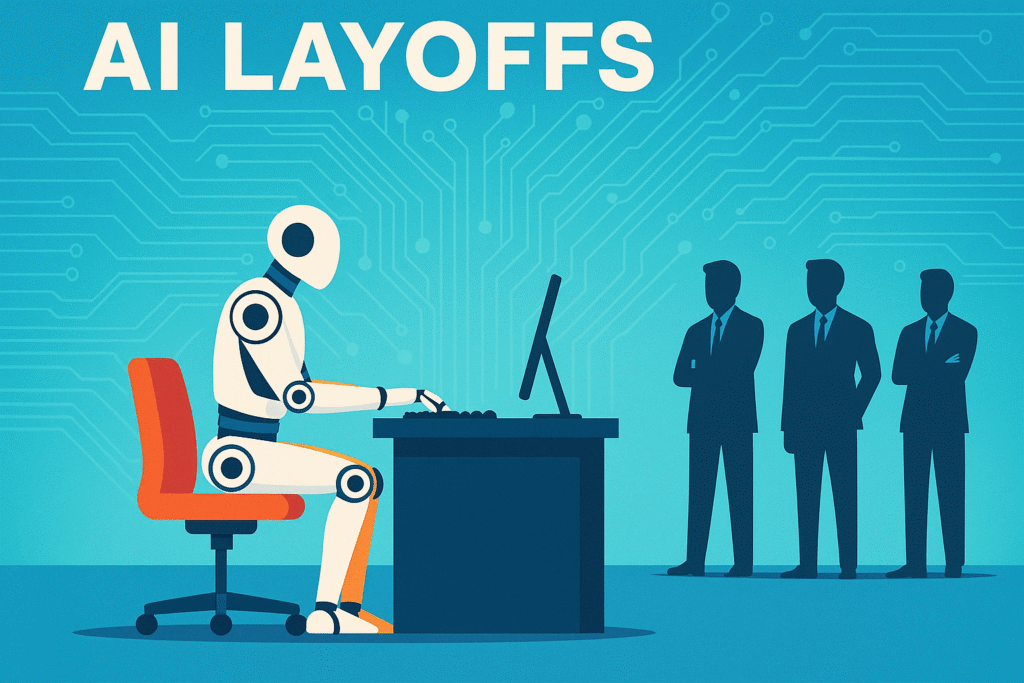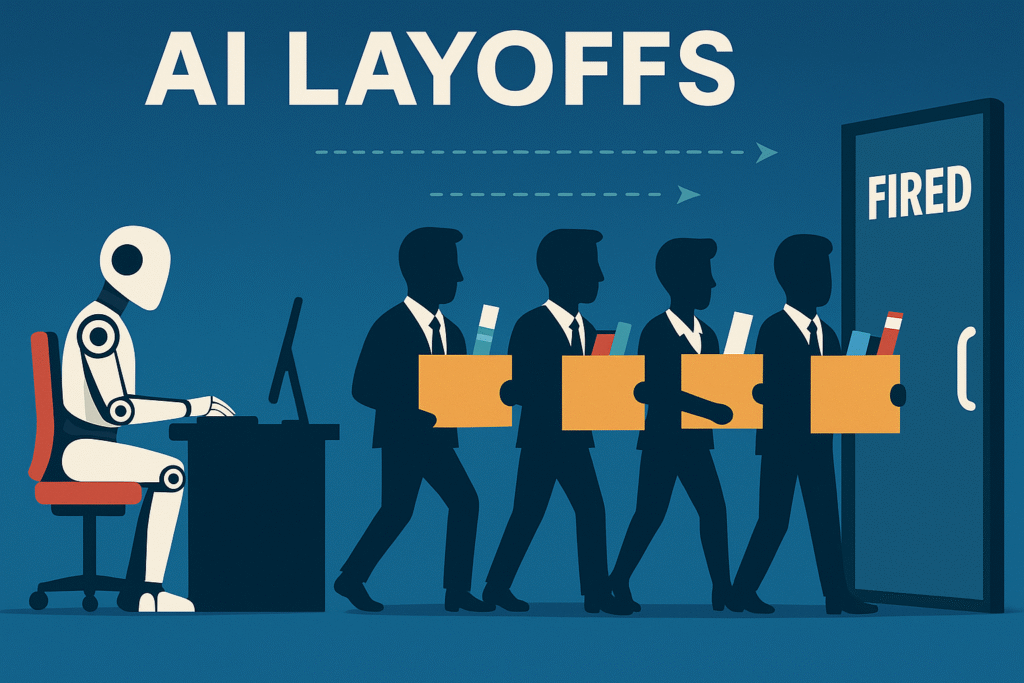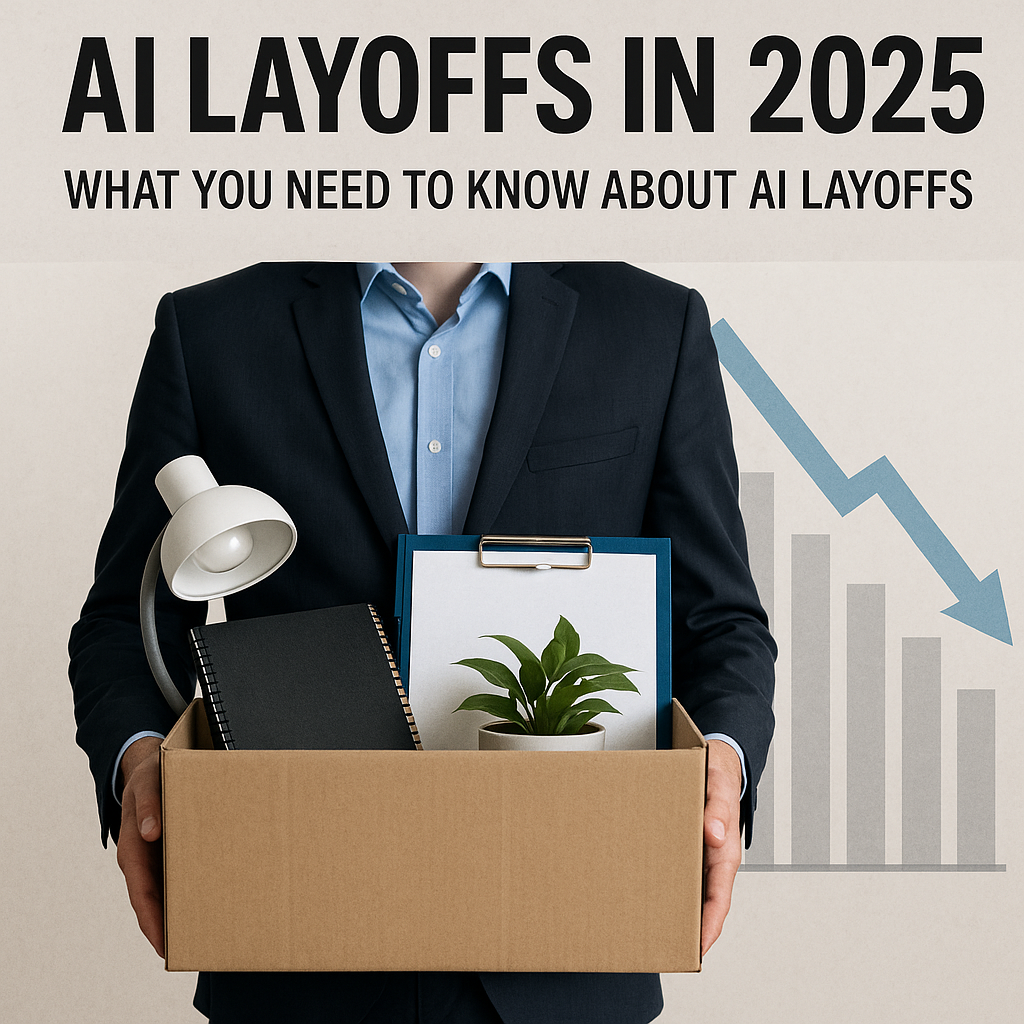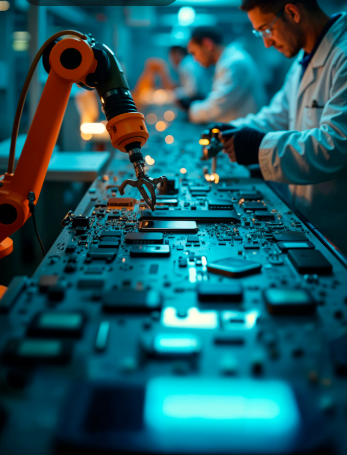In a dramatic turn for the global tech industry, AI layoffs are reshaping how companies operate, hire, and evolve in 2025. Major firms, including Microsoft, Intel, Amazon, Meta, and IBM, are letting go of thousands of employees, even during record-breaking profit quarters. Unlike past downturns, this isn’t a recession response, it’s a strategic pivot fueled by automation and artificial intelligence.
The question now is no longer if AI will disrupt jobs, but how fast and who’s next.
The Reality Behind AI Layoffs

So far in 2025, over 60,000 employees across more than 130 tech companies have faced job cuts. Leading this wave are companies laying off in 2025 like:
- Microsoft, which eliminated 15,000+ roles, shifting billions toward AI infrastructure and automation tools.
- Intel, cutting 20% of its foundry workforce while launching its new AI robotics division.
- IBM, laying off 8,000 HR and admin staff, many replaced by intelligent automation systems.
- Indeed, letting go of 1,300 U.S. employees as it merges with Glassdoor and embraces AI-driven recruitment.
These aren’t isolated incidents they signal a massive transformation in the workforce, driven by AI’s increasing ability to perform human tasks faster, cheaper, and without fatigue.
Automation Job Cuts: Efficiency Overhead or Human Displacement?

One of the driving forces behind these automation job cuts is cost-efficiency. For instance, Microsoft saved over $500 million in just one year by deploying AI-powered customer support tools, which led to thousands of layoffs in call centers globally.
AI job loss is no longer just a hypothetical it’s a measurable, ongoing trend. And while it’s true that AI is opening doors to new jobs, those doors often require entirely different skill sets.
The Future of Work and AI: Who’s Safe, and Who’s Not?
The future of work AI presents both promise and peril. White-collar professionals in admin, finance, customer support, and HR are increasingly vulnerable. Many of these roles are being automated away with precision tools like large language models, robotic process automation (RPA), and predictive algorithms.
But it’s not all doom and gloom.
AI is also creating jobs in fields like machine learning operations, prompt engineering, data governance, cybersecurity, AI compliance, and ethical oversight.
How to Survive AI Layoffs and Future-Proof Your Career
If you’re worried about being part of the next wave of tech layoffs 2025, here’s how to stay ahead:
1. Reskill and Specialize
Focus on roles AI can’t easily replace Upskill in areas like data quality control, AI safety, user experience design, and algorithm auditing.
2. Learn AI Tools, Don’t Fear Them
Companies increasingly demand employees to be AI-literate. Master tools like ChatGPT, Midjourney, GitHub Copilot, or data analytics platforms.
3. Transition Into Hybrid Roles
Move into positions that blend human intuition with AI capabilities—such as project managers for AI tools, AI UX specialists, or ethical AI researchers.
4. Stay Adaptable and Curious
The most resilient employees in 2025 are those who embrace lifelong learning. Stay on top of tech trends, industry shifts, and cross-train across departments.
Knowing how to survive AI layoffs isn’t just about learning code nit’s about understanding what makes you uniquely human in a machine-enhanced world.
Companies Laying Off in 2025 Are Also Hiring Just Differently
Ironically, while these companies are letting go of thousands, they’re simultaneously hiring in AI-forward roles:
- IBM is expanding its teams in AI research, marketing, and software development.
- Meta continues aggressive hiring in generative AI, AR/VR, and Reality Labs.
- Alphabet CEO Sundar Pichai confirmed they’re hiring more engineers into 2026 for human-in-the-loop AI roles.
So while the nature of work is shifting, work itself isn’t disappearing it’s evolving.
Reinvent or Risk Being Replaced
The 2025 AI layoffs wave is a wake-up call, not just for workers but for governments, educators, and businesses worldwide. As automation accelerates, individuals must pivot with purpose. Understanding the shift, embracing change, and staying relevant are no longer optional they’re survival skills.







